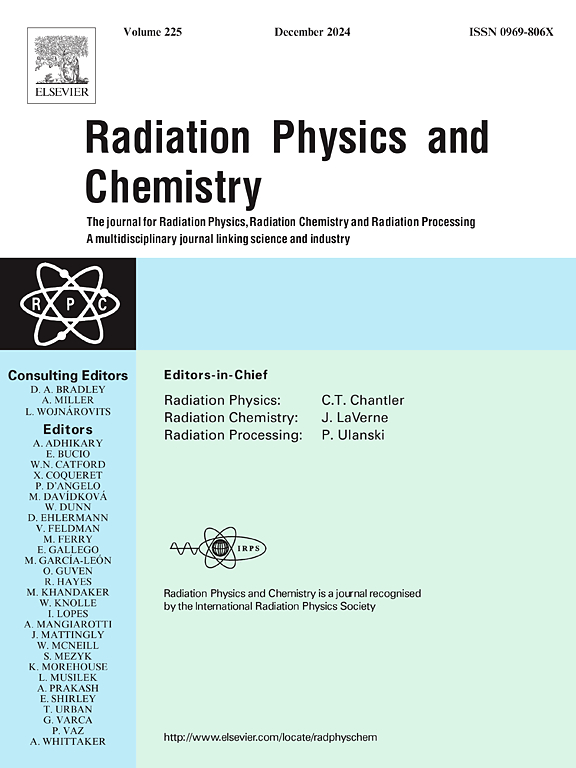PEEK与钛合金种植体材料扩展HU CT影像放射学特性的比较研究
IF 2.8
3区 物理与天体物理
Q3 CHEMISTRY, PHYSICAL
引用次数: 0
摘要
本研究比较聚醚醚酮(PEEK)与钛合金(Ti6Al4V)植入材料在头颈癌放疗患者重建手术中的放射学特性。它侧重于衰减、水中散射、剂量累积和剂量近非均匀性,使用治疗计划系统使用12位和扩展的HU CT图像进行测量和计算。本文章由计算机程序翻译,如有差异,请以英文原文为准。
A comparative study on the radiological properties of PEEK and titanium alloy implant materials with extended HU CT imaging
Introduction
This study compares the radiological properties of Polyether Ether Ketone (PEEK) and titanium Alloy (Ti6Al4V) implant materials in reconstructive surgery for head and neck cancer patients undergoing radiotherapy. It focuses on attenuation, scatter in water, dose build-up, and dose near heterogeneity, measured and calculated with the Treatment Planning System using 12-bit and extended HU CT images.
Methods
PEEK and Ti6Al4V slabs were 3D-printed at various thicknesses, and their radiological properties were measured using a Plane Parallel chamber on a Varian UNIQUE linear accelerator with 6 MV photons. Scatter measurements in a water phantom with 3D-printed holders were performed for both materials. The Eclipse TPS was used for dosimetric analysis with the AAA. TPS analysis utilized 12-bit and extended HU CT image sets of the water phantom with slabs.
Results
PEEK showed minimal scattering effects (<1%) and no dose enhancement. Ti6Al4V resulted in 1.5% dose enhancement and 9.1% dose reduction. CT scans with Ti6Al4V exhibited artefacts, causing 4.5% underestimation of dose. HU maximum value for Ti6Al4V was about 6916 in extended HU CT images, saturating at 3017 in 12-bit depth CT. Depth dose curves from TPS for both CT image sets showed no significant variation with AAA, with a dose enhancement of about 2.5% at the slab entrance.
Conclusion
PEEK could be a viable alternative to Ti6Al4V due to its minimal impact on dose distribution. Enhanced radiation effects near Ti6Al4V and high-density artefacts suggest the need for alternatives to high-density materials, making PEEK as a suitable implant material.
求助全文
通过发布文献求助,成功后即可免费获取论文全文。
去求助
来源期刊

Radiation Physics and Chemistry
化学-核科学技术
CiteScore
5.60
自引率
17.20%
发文量
574
审稿时长
12 weeks
期刊介绍:
Radiation Physics and Chemistry is a multidisciplinary journal that provides a medium for publication of substantial and original papers, reviews, and short communications which focus on research and developments involving ionizing radiation in radiation physics, radiation chemistry and radiation processing.
The journal aims to publish papers with significance to an international audience, containing substantial novelty and scientific impact. The Editors reserve the rights to reject, with or without external review, papers that do not meet these criteria. This could include papers that are very similar to previous publications, only with changed target substrates, employed materials, analyzed sites and experimental methods, report results without presenting new insights and/or hypothesis testing, or do not focus on the radiation effects.
 求助内容:
求助内容: 应助结果提醒方式:
应助结果提醒方式:


